LM321 Operational Amp: Pin Configuration, Applications, and Alternatives
2024-11-18
696
Catalog

LM321 Overview
The LM321 is an extremely versatile single-channel operational amplifier designed for a diverse range of applications. It features internal compensation and a genuine differential input stage. The amplifier can handle a wide supply voltage range: from 3 V to 32 V with single supplies, and ±1.5 V to ±16 V with split supplies.
These characteristics make the LM321 well-suited for various scenarios, offering flexibility for you. The design also emphasizes efficiency, especially beneficial in low-power systems. You can appreciate this balance of functionality and adaptability, meeting the nuanced demands of real-world usage.
LM321 Pin Configuration

LM321 CAD Model

Key Features of the LM321
(Typical values at and , unless otherwise noted)
The LM321 operational amplifier is a versatile component widely utilized in a spectrum of electronic applications. Delving into its required specifications enhances one’s ability to harness its potential effectively in many applications.
Gain-Bandwidth Product
• The LM321 boasts a gain-bandwidth product of 1 MHz, making it adept at handling various applications that require proficient signal processing. This specification emphasizes the upper limit of frequency where the amplifier can still maintain a designated gain.
• When opting for an operational amplifier, one must skillfully balance gain against frequency response to align with the particular demands of an application.
For instance, in the domain of audio amplification, ensuring that sound remains clear and distortion-free necessitates a thoughtful assessment of the gain-bandwidth product, especially in relation to the desired frequency range of the audio signals involved.
Supply Current
• The LM321 consumes a mere 430 µA of supply current, positioning it as an energy-efficient choice for devices powered by batteries.
• Such low power consumption is especially advantageous in applications that prioritize energy savings, like portable electronic gadgets.
• Implementing strategies to reduce current consumption can prolong battery life.
This attribute resonates with past experiences in circuit design where selecting low-power components has directly contributed to extending the operational lifespan of systems.
Input Bias Current
• The LM321 features an input bias current of just 45 nA, minimizing its impact on input signals. This trait proves important for high-impedance applications, where any additional current could lead to signal inaccuracies.
Examples from historical applications show that by effectively managing input bias, one can avert operational challenges, thereby ensuring the reliability of various measurement systems.
Supply Voltage Range
• The LM321 supports a broad supply voltage range of +3V to +32V, providing flexibility for multiple applications.
• Whether in battery-operated devices or systems that require higher voltage, this adaptability opens up various design possibilities.
Stability with High Capacitive Loads
• A standout feature of the LM321 is its stability when interfacing with high capacitive loads.
• Operational amplifiers can be sensitive to nearby capacitance at their outputs, but the LM321's stable nature makes it well-suited for applications such as voltage followers.
Single-Channel Version of LM324
• Ultimately, the LM321 is a single-channel version of the LM324, a quad operational amplifier.
This allows you the flexibility to choose the configuration that best meets their specific requirements while maintaining high performance. Such a characteristic emphasizes the modular approach in electronic design, where selecting the appropriate component can simplify circuit complexity and elevate functionality.
Specifications
This section delves into the technical specifications for the Texas Instruments LM321MF, emphasizing its distinctive features and metrics in comparison with alternative models. A deep comprehension of these specifications supports you in harnessing the component effectively for applications.
|
Parameter |
Value |
||
|
Lifecycle Status |
NRND (Last Updated: 1 week ago) |
Package / Case |
SC-74A, SOT-753 |
|
Mounting Type |
Surface Mount |
Operating Temperature |
-40°C~85°C |
|
Number of Pins |
5 |
JESD-609 Code |
e0 |
|
Packaging |
Tape & Reel (TR) |
Moisture Sensitivity Level (MSL) |
1 (Unlimited) |
|
Part Status |
Not For New Designs |
ECCN Code |
EAR99 |
|
Number of Terminations |
5 |
Packing Method |
TR |
|
Terminal Finish |
Tin/Lead (Sn/Pb) |
Terminal Form |
GULL WING |
|
Terminal Position |
DUAL |
Number of Functions |
1 |
|
Peak Reflow Temperature (Cel) |
260 |
Base Part Number |
LM321 |
|
Supply Voltage |
5V |
Operating Supply Voltage |
16V |
|
Pin Count |
5 |
Operating Supply Current |
860µA |
|
Number of Channels |
1 |
Output Current |
20mA |
|
Nominal Supply Current |
1.15mA |
Architecture |
VOLTAGE-FEEDBACK |
|
Slew Rate |
0.4V/µs |
Common Mode Rejection Ratio |
65 dB |
|
Amplifier Type |
General Purpose |
Voltage - Supply, Single/Dual (±) |
3V30V, ±1.5V±15V |
|
Current - Input Bias |
45nA |
Input Offset Voltage (Vos) |
7mV |
|
Output Current per Channel |
40mA |
Voltage Gain |
100dB |
|
Unity Gain BW-Nom |
1000 Hz |
Low-Offset |
NO |
|
Power Supply Rejection Ratio (PSRR) |
65dB |
Supply Voltage Limit-Max |
32V |
|
Frequency Compensation |
YES |
Low-Bias |
NO |
|
Voltage - Input Offset |
2mV |
Programmable Power |
NO |
|
Micropower |
NO |
Length |
2.9mm |
|
Height |
1.45mm |
Thickness |
1.2mm |
|
Width |
1.6mm |
Radiation Hardening |
No |
|
REACH SVHC |
No SVHC |
Lead Free |
Contains Lead |
|
RoHS Status |
Non-RoHS Compliant |
|
|
LM321 Layout

LM321 Functional Diagram
The functional diagram of the LM321 presents an intricate view of this operational amplifier, illustrating its internal composition and the various elements that enhance its performance characteristics. Gaining familiarity with this diagram can empower you by revealing the underlying mechanics of the amplifier in numerous applications.

LM321 Circuit Applications
The LM321 operational amplifier is renowned for its adaptability and compact architecture, making it a preferred choice in various electronic applications. Its low power consumption further heightens its appeal, especially in scenarios where cost efficiency and space limitations are primary considerations. This operational amplifier's inherent simplicity and versatility empower you to craft effective circuit designs that prioritize reliability and amplification efficiency.

LM321 Alternative Options
|
Part Number |
Description |
Manufacturer |
|
LM32185EXPOWER CIRCUITS |
IC 0.65 A SWITCHING REGULATOR, 200 kHz SWITCHING
FREQ-MAX, DSO8, LTCC-8, Switching Regulator or Controller |
National Semiconductor Corporation |
|
LM32185EPOWER CIRCUITS |
IC 0.65 A SWITCHING REGULATOR, 200 kHz SWITCHING
FREQ-MAX, DSO8, LTCC-8, Switching Regulator or Controller |
National Semiconductor Corporation |
Applications of the LM321 Operational Amplifier
The LM321 operational amplifier is widely used across numerous industries due to its distinctive features such as minimal power usage and exceptional performance. This section explores various practical applications, offering knowledge not only into its capabilities but also the nuanced understanding gained from its real-world usage.
Charging Circuits
In the domain of charging circuits, the LM321 effectively manages voltage regulation and current control, ensuring batteries are charged efficiently and securely. It emphasizes that a well-implemented feedback mechanism can enhance system efficiency by preventing overcharging and extending battery lifespan. You can often establish precise thresholds and use hysteresis in circuit designs to further refine charging durations, applying techniques fostered through industry practice.
Power Supply Systems
The LM321 is an integral component in power supply systems, where its functions in voltage amplification and stabilization are required. Its competency at lower supply voltages lends particular value to portable technologies. Practical implementations show that a thoughtfully engineered power supply bolsters system dependability and boosts energy utilization efficiency. You can stress the importance of judicious component choice to reduce ripple and noise, thereby ensuring superior power quality.
Industrial Controls and Instruments
Within the sphere of industrial control and instrumentation, the LM321 fulfills roles such as signal conditioning and data gathering. Its precision and stable performance are ideal for applications requiring accurate measurements. Practical applications demonstrate that coupling the LM321 with digital converters markedly enhances measurement precision. In addition, you can prioritize regular calibration and durable circuit designs to maintain long-term efficacy.
Desktop Computers
When it comes to desktop computers, the LM321 is common in analog signal processing tasks, especially for audio and video signal amplification. Its low distortion is required to preserve high-quality output in multimedia applications. Industry insights suggest that using differential signaling can improve signal fidelity, diminishing the risk of interference. This not only enriches your experience but also prolongs the lifespan of components by reducing operational strain.
Communication Infrastructure
Communication infrastructures gain from the LM321's proficiency in signal amplification and processing. Its role in communication signals is required to maintain the clarity and strength of transmissions. It indicates that integrating the LM321 in feedback loops can substantially improve system reaction times. You can often concentrate on optimizing layout designs to mitigate interference, ensuring robust communications across various conditions.
LM321 Package Overview

LM321 Manufacturer
Texas Instruments (TI) emerges as a prominent figure in the semiconductor landscape, with a robust presence spanning 35 countries. The company harnesses the expertise of a diverse and highly skilled workforce, shaping its future in an ever-evolving industry.
Since the pioneering launch of the first functional integrated circuit in 1958, TI has experienced growth. Currently, the company employs over 30,000 dedicated professionals who contribute to various aspects, including the design, manufacturing, and distribution of an extensive range of analog and embedded processing chips.
This journey reflects a corporate ethos centered around innovation and a profound comprehension of the intricate market dynamics that drive consumer behavior and preferences. Such commitment ensures that TI not only keeps pace with technological advancements but also anticipates the evolving needs of its customer base.
Datasheet PDF
LM321MF Datasheets:
LM321MF.pdfLM321MF Details PDF
LM321MF PDF - DE.pdf
 ABOUT US
Customer satisfaction every time. Mutual trust and common interests.
ABOUT US
Customer satisfaction every time. Mutual trust and common interests.
function test. The highest cost-effective products and the best service is our eternal commitment.
Hot Article
- Are CR2032 and CR2016 Interchangeable
- MOSFET: Definition, Working Principle and Selection
- Relay Installation and Testing, Interpretation of Relay Wiring Diagrams
- CR2016 vs. CR2032 What’s the difference
- NPN vs. PNP: What's the Difference?
- esp32 vs stm32: which microcontroller is better for you?
- LM358 Dual Operational Amplifier Comprehensive Guide: Pinouts, Circuit Diagrams, Equivalents, Useful Examples
- CR2032 VS DL2032 VS CR2025 Comparison Guide
- Understanding the Differences ESP32 and ESP32-S3 Technical and Performance Analysis
- Detailed Analysis of RC Series Circuit
 MAX16054AZT+T Controller Datasheet, Alternatives, and Applications
MAX16054AZT+T Controller Datasheet, Alternatives, and Applications
2024-11-18
 74HC02 Quad 2-Input NOR Gate Guide
74HC02 Quad 2-Input NOR Gate Guide
2024-11-16
Frequently Asked Questions [FAQ]
1. How do the LM321 and LM324 differ in their applications?
Both the LM321 and LM324 serve as operational amplifiers, yet each is tailored for distinct tasks that fulfill varying circuit demands. The LM321 shines as a precision preamplifier, especially effective with dual power supplies, catering to scenarios where fine accuracy is needed. Meanwhile, the LM324 excels in low-power, quad operational amplification, making it suitable for single-supply systems. The LM321 surpasses the LM324 in terms of drift, bias current, common-mode rejection, and power supply rejection, making it particularly advantageous in audio processing and sensor-related uses where precision is a priority. Selecting the right operational amplifier profoundly affects system performance, emphasizing the significance of understanding component specifications in practical applications.
2. What distinct roles do the LM321 and LM331 play?
The LM321 and LM331 are designed for different functions. The LM321 serves as a single operational amplifier, providing amplification capabilities required in diverse applications. On the other hand, the LM331 acts as a voltage-to-frequency converter, converting analog voltage levels into corresponding frequency signals. This variance emphasizes the breadth of operational amplifier functions where the choice of component is dictated by application context. Specialty fields, such as signal processing or measurement systems, benefit from this differentiation, demonstrating how a keen understanding of each component's utility improves design outcomes.
3. Can the LM321 function with just a single power supply?
The LM321 is adaptable enough to function with a single power supply, operating effectively within a voltage range of 3 to 30 volts. This feature illustrates its strength in integrating into various electronic designs, even those limited by power supply options. However, the LM321's output in single-supply mode is approximately 1/4 of the LM324's capacity. This factor emphasizes the importance of meticulous design planning, ensuring that the operational environment and power strategies align with the amplifier’s characteristics for optimal performance. Early prototyping with multiple supply configurations often yields valuable insights into performance trade-offs, thereby enhancing product robustness and efficiency.
Hot Part Number
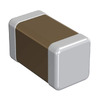 GRM0225C1E3R2WA03L
GRM0225C1E3R2WA03L 08052U1R0CAT2A
08052U1R0CAT2A QMK316SD103KL-T
QMK316SD103KL-T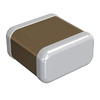 GRM0335C2A9R6CA01J
GRM0335C2A9R6CA01J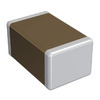 GRM2165C2A302JA01D
GRM2165C2A302JA01D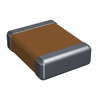 12105A202JAT2A
12105A202JAT2A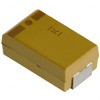 T494D336K035AT
T494D336K035AT D38999/24WB2PN
D38999/24WB2PN BY228GP-E3/54
BY228GP-E3/54 BZX84C13-7-F
BZX84C13-7-F
- SP233ACT-L/TR
- CY62148EV30LL-45ZSXI
- CY7C1381D-133AXI
- IS42S32400B-6BL
- ACH4518-223-TD01
- MAX2990ECB+
- CY7C1386S-167AXC
- AT45DB321C-CC
- VE-B43-EV
- VI-JN2-IW
- RT1206BRE0733KL
- EPF6010ATC100-1N
- FS50R12W2T4
- SKM200GB173D1
- GTLP18T612MEA
- T491A335M010ZTAU00
- LTC6995HS6-1#TRMPBF
- LT5572EUF#TRPBF
- TLC27M4CDR
- XC3S1400A-5FGG484C
- LSF0102DCTR
- AT28C64B-15JA
- ATA2508DA-24S
- CD90-VF850-14AT
- ECS-327-12.5-17X-TR
- GAL22V10-25LP
- LC78603E-8628
- MD5811-D512-V3Q18-X
- RC28F128K3C
- SM8952AL25JP
- SST39SF010-70-4C-NH
- UPD720102GC-YEB-A/JC
- WD10C23-JH-10
- AN8406SHRE1V
- PNX8300HL/C1/10
- SA9259
- K4S281632I-UC7500
- VI-J01-31
- LP3982IMM-3.3-NOPB